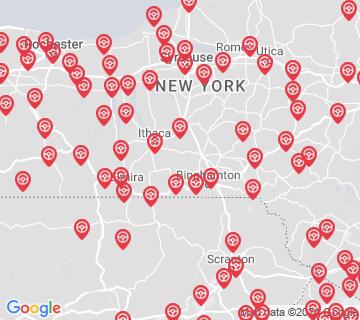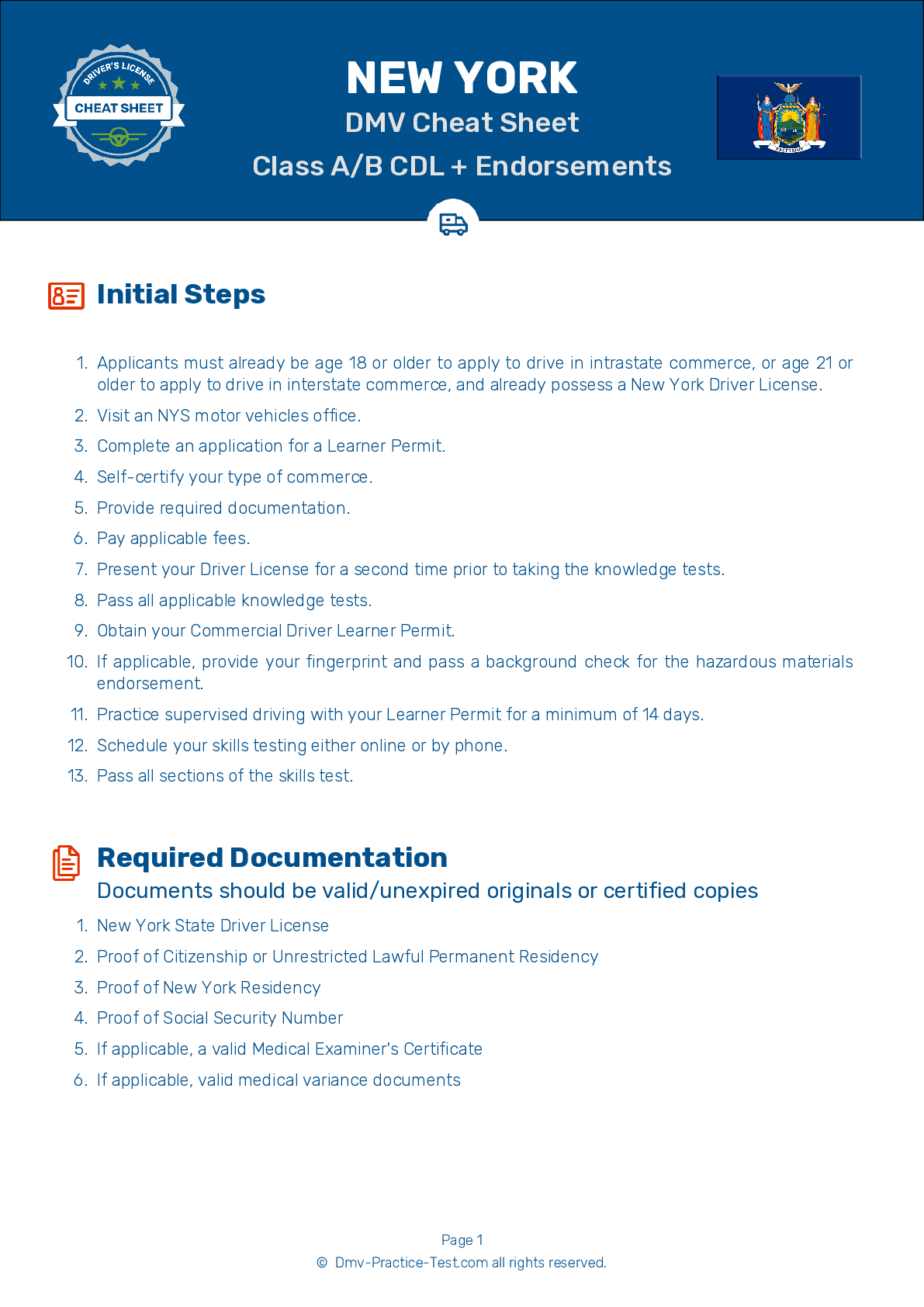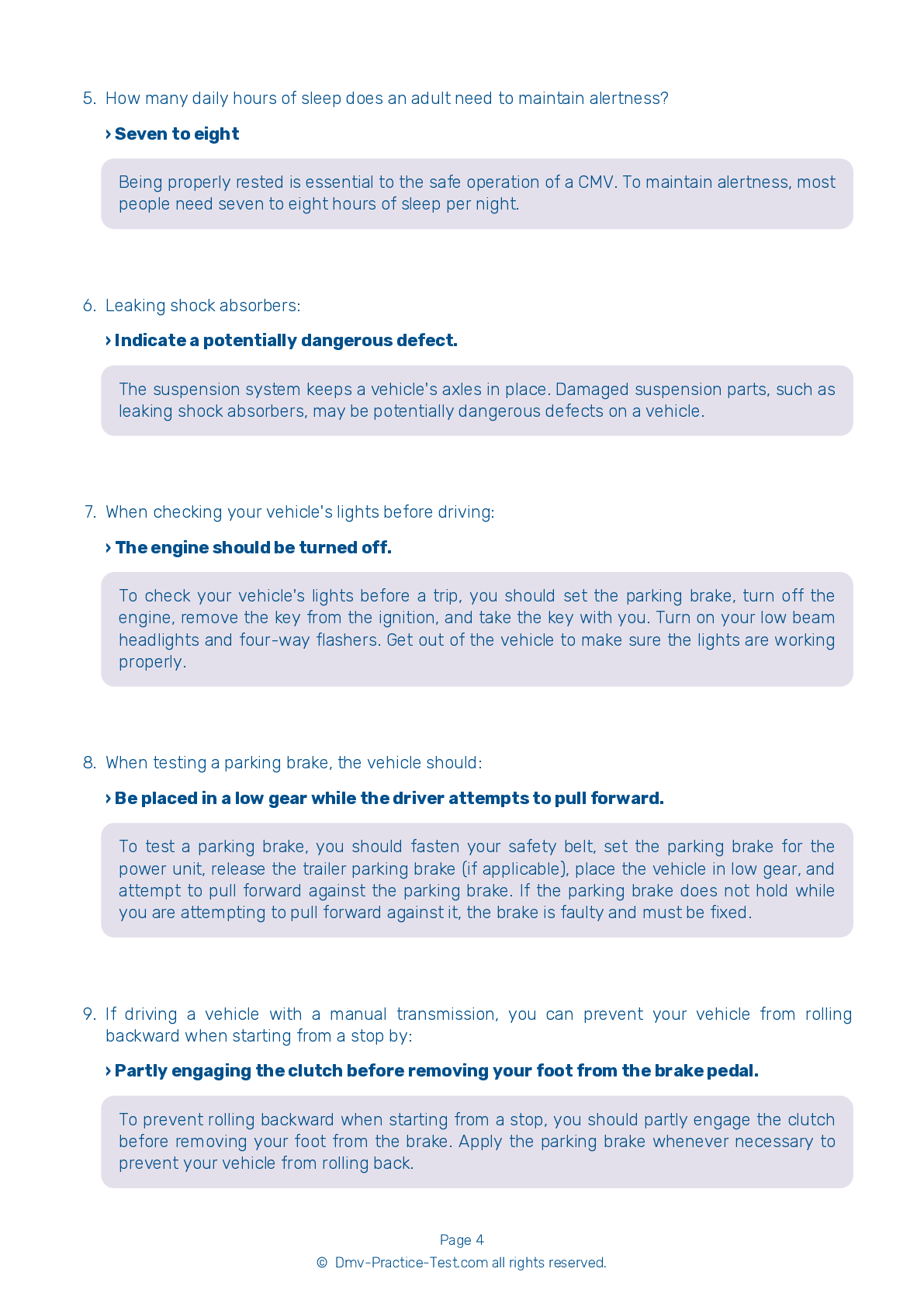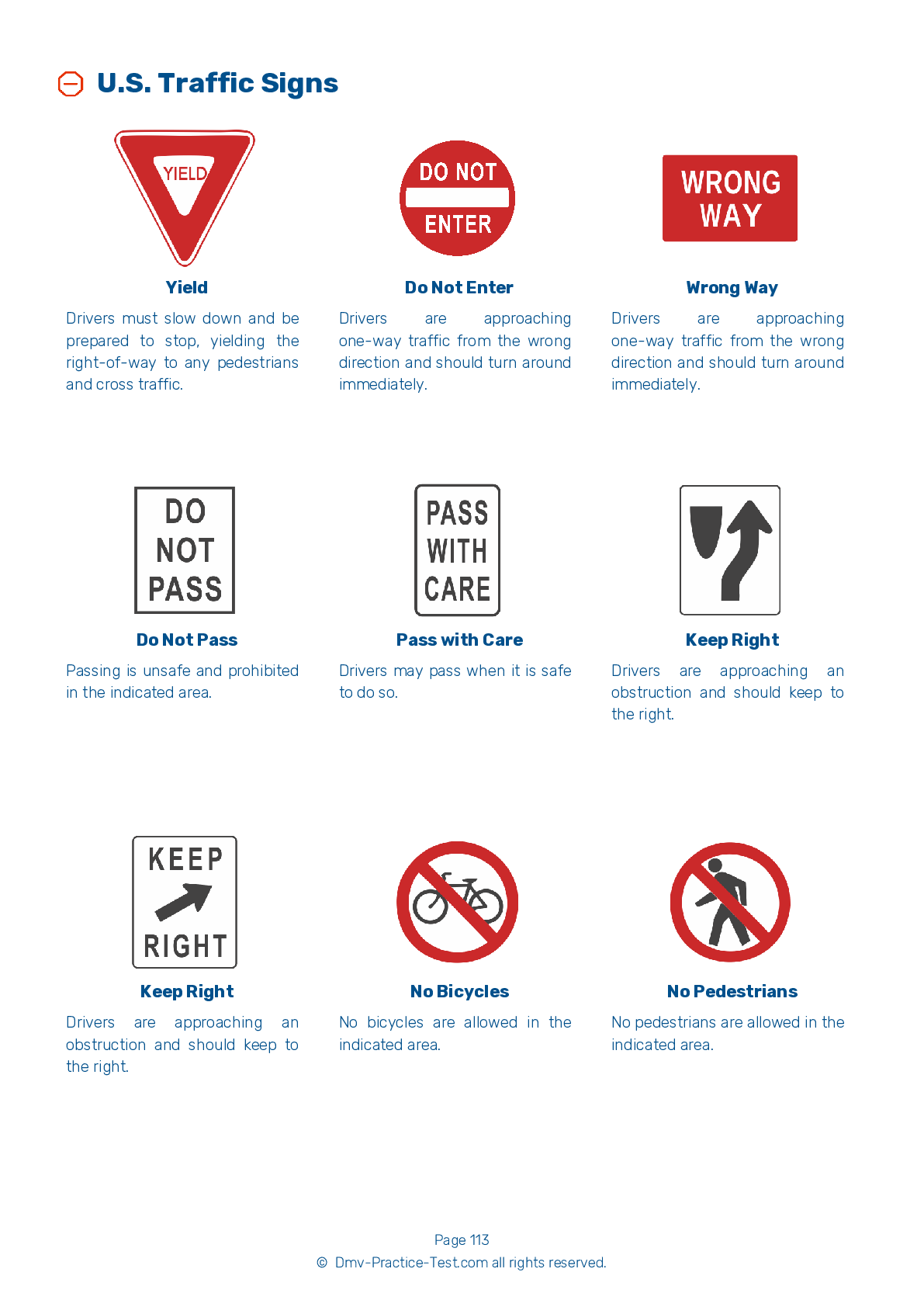HazMat #1
Hazmat Test | New York 2025 #1 Page 4 of 5
On our website, we provide FREE practice - CDL hazmat test online! The official exam test consists of several obligatory parts, with all of them checking your knowledge of different blocks of road rules. If you need to obtain a NY CDL hazmat endorsement in 2025, practice as much as possible. Free sample tests published on our website will help you check and improve your knowledge and boost your grades. Please bear in mind that New York requirements for issuing a hazmat endorsement for CDL may vary from those established in other states.
30
24
20
19 . If you are transporting Class 3 flammable liquids and your cargo needs to be moved into another tank, the flammable liquids:
Should be transferred at night.
Flammable liquids should not be transferred from one vehicle to another on a public roadway, unless being moved due to an emergency. Always warn others of the hazards presented by the materials.
20 . Which of the following is not an acceptable location to keep hazardous materials' shipping papers?
On the driver’s seat while the driver is outside of the vehicle
When the vehicle is being driven, hazardous materials' shipping papers must be kept in a pouch on the driver's door or somewhere else that is in clear view and within the driver's reach. If the driver is outside of the vehicle, the shipping papers should be kept on the driver's seat.
21 . Which of the following is not an example of a shipping paper?
Directions
A shipping paper describes hazardous materials being transported. Shipping orders, bills of lading, and manifests are all shipping papers.
22 . Shipping papers identifying hazardous materials should be:
Stored under the passenger’s seat.
Carriers and drivers must be able to quickly identify hazardous materials' shipping papers. Shipping papers for hazardous materials should be on the top of a stack of shipping papers.
23 . Who is responsible for identifying the hazard class of materials being shipped?
The mechanic
The shipper of hazardous materials is responsible for identifying the product's identification number; proper shipping name; hazard class; packing group; and correct packaging, labels, marking, and placards.
24 . Shippers must label hazardous materials. If an item is smaller than its label, how should the item be labeled?
The item may be placed in a box displaying a warning label.
Shippers must place diamond-shaped hazard warning labels on most packages of hazardous materials. If the label won't fit on the package, it can be placed on a tag that is securely attached to the package.
Search the best driving school in your neighbourhood
2025 New York | Frequently Asked Questions
To acquire a CDL Passenger endorsement in New York, you first need a valid New York CDL. Then, pass the written test for passenger vehicles at the DMV. If successful, you'll receive a permit to get behind-the-wheel experience. Once ready, schedule and pass a skills test. Upon passing, the DMV will add the passenger endorsement to your CDL.
To obtain a CDL Passenger license, you must meet several criteria: You must be at least 21 years old, possess a valid driver's license, pass a medical examination, and complete a CDL training program. You also need to pass written knowledge tests and a skills test, which includes vehicle inspection, basic controls, and on-road driving. Lastly, you must not have any disqualifying criminal offenses.
Yes, to secure a CDL Passenger endorsement in New York, you need specific training and experience. This includes passing a written test about passenger vehicles at the DMV, obtaining a permit for behind-the-wheel experience with passenger vehicles, and successfully passing a skills test. These steps ensure you have the necessary knowledge and skills to safely operate a passenger vehicle.
Yes, additional written tests are mandatory for the CDL Passenger endorsement in New York. You are required to pass a written test specifically about passenger vehicles at the DMV. After obtaining a permit and gaining behind-the-wheel experience, you will also need to pass a skills test to receive your endorsement.
During the CDL Passenger endorsement assessment, you'll need to demonstrate skills such as pre-trip vehicle inspection, safe driving practices, proper use of mirrors, executing turns and stops smoothly, and correctly loading/unloading passengers. You may also need to show your ability to manage emergency situations and your understanding of passenger comfort and safety.
No, you cannot legally transport passengers in New York without a valid CDL Passenger endorsement. This endorsement is required for drivers who wish to drive vehicles such as buses or vans that can carry 16 or more passengers, including the driver. Driving without the necessary endorsement can result in legal penalties.
Yes, you can add the CDL Passenger endorsement to your existing license. You don't need a new application. You have to pass a written knowledge test and a skills test that includes pre-trip vehicle inspection, basic vehicle control, and on-road driving. Once you pass these tests, the endorsement will be added to your CDL.
Yes, there are specific restrictions for drivers with a CDL Passenger endorsement in New York. These include not carrying more passengers than the vehicle is designed for, ensuring all passengers wear seatbelts, maintaining a zero alcohol level while driving, and following specific safety protocols for loading and unloading passengers. Failure to adhere to these restrictions can result in penalties or loss of endorsement.
Yes, to acquire a CDL Passenger endorsement in New York, you must be at least 21 years old. This age requirement is set due to the interstate nature of commercial driving. However, those aged 18-20 can obtain a CDL without the Passenger endorsement for intrastate (within state) driving. They cannot transport passengers until they reach 21.
A CDL Passenger endorsement allows you to operate a vehicle that can carry 16 or more passengers, including the driver. This includes buses, shuttles, and some types of vans. However, it does not authorize you to drive a school bus or a vehicle transporting hazardous materials, as these require additional endorsements.




